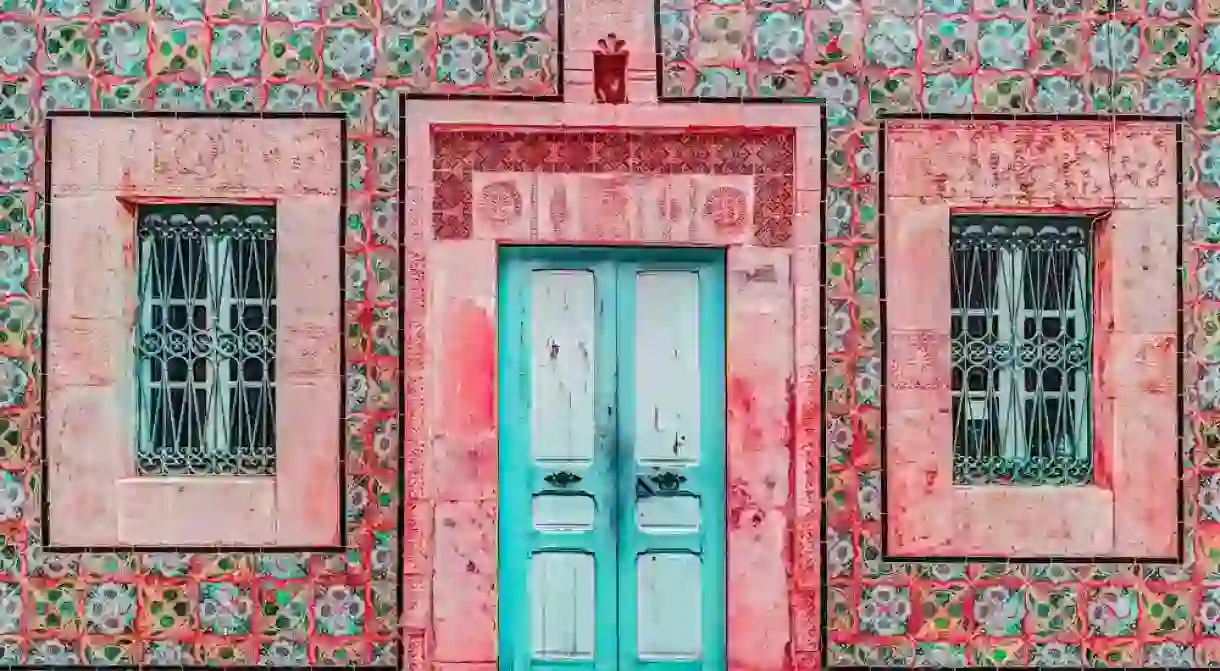The Most Colourful Streets in Africa

With its intense pink Lake Retba in Senegal, immense volcanic landscape of Dallol in Ethiopia, vibrant traditional clothing of the Maasai and striking markets, Africa is a continent that understands the power and importance of colour. Here we take a tour of the most vivid streets in the world’s second largest continent.
Bo-Kaap, Cape Town, South Africa

Set against the impressive backdrop of Table Mountain, Bo-Kaap adds another colour dimension to the Cape Town landscape with its unusual pastel-painted houses. Ranging from icy mint and fresh peach to zingy neon yellows and popping pinks, this cluster of brightly coloured buildings is a must-see in the former township.
Chefchaouen, Morocco

An intoxicating blue hue permeates throughout the Moroccan city of Chefchaouen. Every aspect of the city’s medieval alleyways, including walls, doors, window shutters and walkways, are washed in a vivid ultramarine. Whichever of the myths you believe as to why Chefchaouen is painted blue, it’s good to know that this particular type of blue – made from grinding down lapis lazuli mined in Afghanistan – was once as expensive as gold and therefore reserved only for depicting the Virgin Mary by Renaissance painters.
You might also like: These Are the Most Colourful Streets in the World
Kigali, Rwanda

The countless murals around Kigali have been created to encourage positive social change through street art. Organised by Kurema, Kureba, Kwiga, a social enterprise initiative set up by Judith Kaine in 2013, many of the streets in Kigali have been rejuvenated by eliminating the gallery wall and taking art to the streets, bringing Rwandan communities and artists together to create meaningful propositions.
Pretoria, South Africa

Pretoria is commonly known as ‘Jacaranda City’ for the abundance of amazing purple flowering trees that line the city’s streets. From September to mid-November, the city is transformed into a mauve haze by this tree that was introduced from Brazil in the early 1800s. There are apparently more than 70,000 jacarandas all over Pretoria, many of which can be found on Bosman Street and Cilliers Street. Superstitious students believe that if a petal of purple blossom should fall on your head, then you’ll pass your exams.
Medina of Tunis, Tunisia

A UNESCO World Heritage Site since 1979, Tunisia’s capital is a vision of colourful kaleidoscopic tile work. With its sprawling souk and labyrinth passageways, the Medina of Tunis is a complex warren of ancient beauty, decorated with some of the most exquisite brightly coloured glazed patterns.
Cape Verde

The tiny nation of Cape Verde is made up of 10 volcanic islands in the Atlantic Ocean and mixes African and Portuguese Creole culture. Surrounded by clear aqua-blue sea and nearly year-round sun, the inhabitants of this archipelago know how to stay upbeat with their colourful buildings.
Accra, Ghana

Since 2011, the Chale Wote Street Arts Festival has been taking over Jamestown, Accra, engaging the West African audience with a variety of arts-based events. Public spaces are activated through street painting, interactive installations, live performances and fashion parades, transforming the city into a dynamic mixing pot of culture.
Marrakech, Morocco

Known as the ‘Red City’, the rich earthy ochre-coloured walls of Marrakech’s old city are a maze of vivid alleys. From the azure-blue buildings in the tropical gardens of Le Jardin Majorelle to the brightly coloured carpets, shoes and souk paraphernalia, this Moroccan city is a treasure trove of vibrant wonder.
Johannesburg, South Africa

The South African city of Johannesburg is home to some of the most adventurous artistic interventions, such as the two cooling towers of Soweto’s decommissioned power plant which have been reinvigorated by imaginative murals and Newtown’s electric array of street art. Not to mention the contemporary architecture that employs abstract styles and colourful schemes. Here, nature has been brought into the urban environment with Falko One’s depiction of two African elephants, considered a symbol of power and strength.
Harar, Ethiopia

The fortified city of Harar in eastern Ethiopia is considered Islam’s fourth holy city and became a UNESCO World Heritage Site in 2006. Its architectural design which gives the city its distinctly unique character is a combination of African and Islamic influences. In the 19th century, an additional layer was added to the urban environment as Indian merchants built houses with wooden balconies. Its 82 mosques and 102 shrines adds to its sacred charm, while the many traditional homes – painted in dusty pinks, turquoise and oranges, and sometimes decorated with abstract motifs – give this ancient city a contemporary feel.
Want to see more vibrant places around the world? Here are the most colourful streets in Europe.













